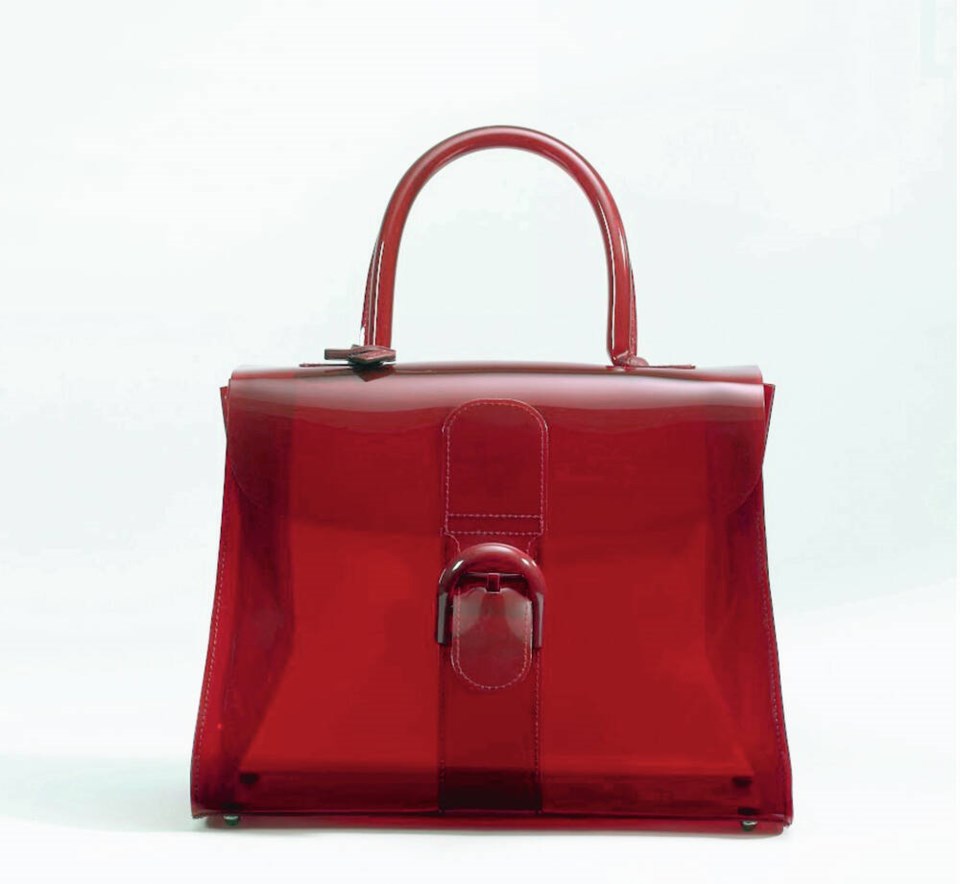“Vegan leather?” he marvelled. “How is that even possible?”
“It’s vinyl,” I said.
Nature Boy had accompanied me to a local shop as I sought to replace a computer bag that had fallen to bits. He had thought this would be a quick stop among the day’s errands while I quickly looked over the available selection, decided and purchased, or moved on.
Instead, he got a lesson in marketing-speak.
“A vinyl bag? For $300?” he continued marvelling.
“It used to be called ‘pleather,’ ” I said. “And a person of your advanced years would be familiar with the term ‘Naugahyde.’ ”
Those earlier names didn’t achieve lasting cachet for the vinyl clothing and accessories industry. Today, “vegan leather” taps into the simultaneously eco-conscious and fashion-forward market and its associated available spending dollars.
But somebody paying $300 for a bag or piece of clothing made of fake leather — let’s call it what it is — is likely getting some kind of plastic. Most items made of fake leather — or “faux” leather, if you prefer precious and non-transparent marketing terminology — are usually made of layers of polyvinyl chloride (PVC) or polyurethane that has been painted onto fabric.
Items that qualify as “vegan leather” can also be made from cork, barkcloth, glazed cotton, waxed cotton and paper, but those options are much less common.
PVC was the top fake leather material for years, but has recently been overtaken by polyurethane. PVC contains and releases nasty chemicals, including dioxins and phthalates, the plastic-softeners that turn PVC from the rigid material that forms water pipes into the malleable plastic found in vinyl.
Both chemicals persist in the environment. Both have been shown to cause genetic mutations in healthy animal cells — that is, they cause cancer. Both are known to interfere with animal and human hormones.
The production of polyurethane faux leather is also problematic because highly toxic solvents are required as part of the process. In addition, most polyurethane is made with petroleum products, with all the associated environmental implications, although some versions use oil from corn or soy instead.
And there’s another issue. Plastic by any name doesn’t decompose, but fake leather purses and shoes do eventually disintegrate. That trendy vegan leather purse, computer bag, belt, pair of shoes or jacket you shelled out for will, after a decade or maybe less, develop a case of mange and shed plastic flakes in a case of really, really bad product dandruff.
Those flakes end up in the landfill, alongside what’s left of the item. They may also end up in soil, rivers and the ocean, where critters may ingest them.
Of course, leather isn’t free of problems either. Tanning, curing and dying leather is a poisonous, unhealthy business. And although cows aren’t raised specifically to become purses or jackets — leather being a byproduct of the meat industry — raising animals for meat contributes to climate change, loss of forests, wetlands and other ecosystems, water issues and so on. There are also the associated concerns regarding animal welfare and the ethics of raising animals to eat.
That said, leather cured and tanned well ages well and can last for generations if well made and well cared for.
When I was in high school, I bought a used leather coat from a thrift store and wore it regularly for 20 years before the seams gave out. I have leather shoes that I resole every few years because they’re so comfortable. My niece has a leather satchel that my mother made from part of the hide of Charlie, a cow her brother raised on the family farm.
After 60 years, the satchel needs a new zipper but otherwise has weathered into a funky, fashionably “distressed” item that attracts attention and compliments. Even though it was made before computers became personal or portable, my niece uses it as computer bag.
Obviously, with that staying power, using leather in throwaway or “fast” fashion is a waste.
“Is ‘vegan leather’ like ‘turkey ham’?” Nature Boy said, referring to the ready-to-eat, processed meat that is made from cooked or cured turkey meat, water and other ingredients, including binders. “I’ve never understood that term either. The mental image of a turkey strutting along with hog legs instead of drumsticks, frankly, is disturbing.”
keiran_monique@rocketmail.com



